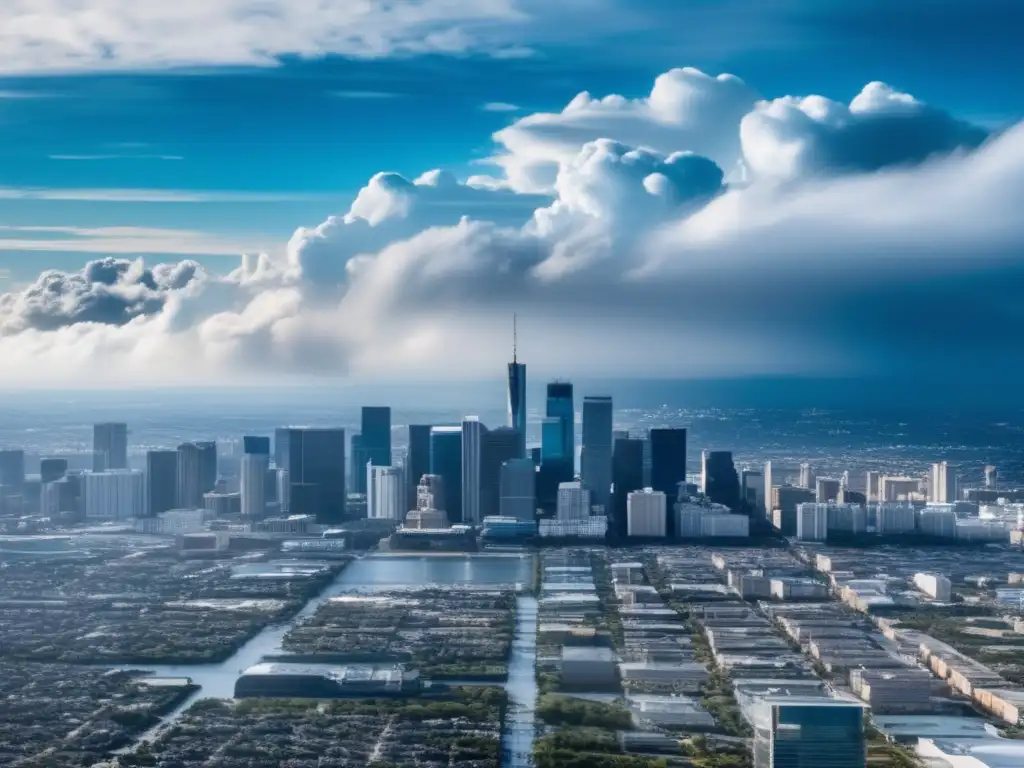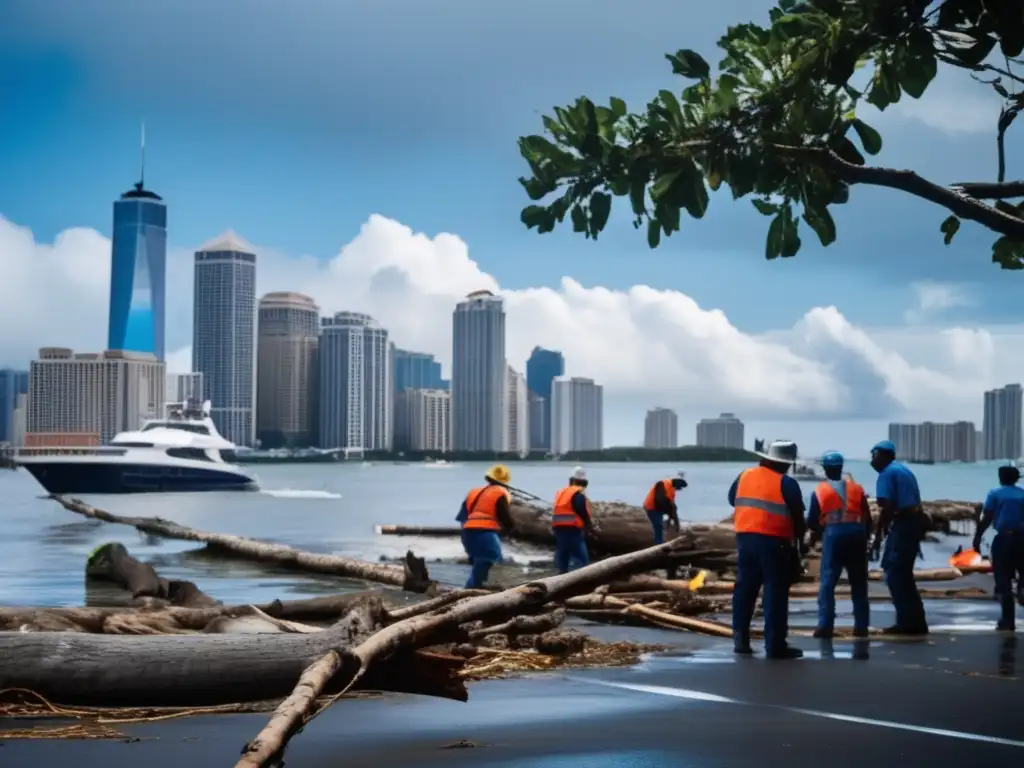Hurricane-Proofing Cities: Is It Possible?

Hurricane-Proofing Cities: Is It Possible?
Introduction
As hurricane seasons become more threatening each year, the question of whether it is possible to hurricane-proof cities has been a topic of discussion amongst experts, policymakers, and citizens alike. Hurricanes are natural disasters that can cause significant damage to infrastructure, homes, and lives. The severity and frequency of hurricanes have been increasing in recent years due to climate change, making it crucial for us to explore ways to protect our cities and communities. This article will discuss methods that have been implemented to hurricane-proof cities, their effectiveness, and the challenges faced.
The Role of Building Codes and Standards

The Importance of Building Codes and Standards
Building codes and standards are sets of regulations that govern the design, construction, and maintenance of buildings. These regulations are aimed at ensuring the safety of occupants and the resilience of buildings during natural disasters such as hurricanes. In hurricane-prone areas, building codes and standards have been modified to include measures such as wind-resistant roofs, hurricane-rated windows, and raised foundations. The implementation of these codes and standards has been proven to be effective in reducing damage to buildings during hurricanes.
Lack of Enforcement and Compliance Challenges
While building codes and standards are crucial in hurricane-proofing cities, their effectiveness is dependent on compliance and enforcement. In some areas, building codes are not enforced, and some builders opt to ignore them, leading to buildings that are not up to standard. Additionally, compliance with building codes and standards can be financially burdensome, especially for low-income households, which may force individuals to opt for cheap, substandard materials. The lack of enforcement and compliance challenges highlight the need for stricter penalties for non-compliance and incentives to encourage compliance.
The Need for Regular Updates
Building codes and standards need to be regularly updated to remain relevant and effective. As technology advances, new materials and designs emerge, making it necessary for codes and standards to evolve accordingly. Additionally, climate change has increased the severity and frequency of hurricanes, making it crucial for building codes and standards to adapt to climate-related threats. The Hurricane-Proofing Cities project, developed by the International Code Council (ICC), is an example of a recent initiative aimed at creating resilient communities by developing innovative codes and standards.
Investment in Infrastructure

Infrastructure Upgrades
Investment in infrastructure is a critical aspect of hurricane-proofing cities. Upgrades such as enhanced drainage systems, flood barriers, and seawalls can help protect cities from the damaging effects of hurricanes. Additionally, investment in green infrastructure such as parks and trees can help absorb excess water during heavy rainfall and reduce the risk of flooding. These upgrades not only increase resilience during hurricanes but also boost the overall efficiency and attractiveness of cities.
The Cost of Investment and Maintenance
While infrastructure upgrades are necessary for hurricane-proofing cities, the cost of implementation and maintenance can be significant. Funding for infrastructure upgrades may be challenging to secure, especially for low-income communities that are most susceptible to hurricane damage. Additionally, the maintenance of infrastructure upgrades can also be costly, leading to neglect and underfunding. A solution to these challenges is public-private partnerships, which can provide financial support and ensure the proper maintenance of infrastructure upgrades.
The Impact of Climate Change on Infrastructure
Climate change has brought with it an increased risk of hurricanes, making it necessary for infrastructure upgrades to adapt to these changes. The construction of seawalls and flood barriers, for instance, must be designed to account for sea-level rise. Additionally, infrastructure upgrades should also consider the impact of climate change on urban heat island effects, water infrastructure, and energy systems. The incorporation of green infrastructure, such as green roofs, can help mitigate the impact of climate change on infrastructure while increasing resilience during hurricanes.
Community Preparedness and Response Planning

The Importance of Community Preparedness
Community preparedness is a critical aspect of hurricane-proofing cities. Communities that are aware of hurricane risks and have developed emergency plans tend to fare better during hurricanes than those who do not. Community preparedness involves educating citizens on hurricane risks, developing evacuation and shelter plans, and creating first responder networks. Hurricane drills and simulations can also help prepare communities for the impact of hurricanes.
The Need for Effective Communication Systems
Effective communication systems are crucial during hurricanes, especially during the evacuation and response phases. Citizens must receive accurate and timely information on hurricane risks, evacuation orders, and shelter locations. Communication systems must be robust enough to withstand power outages and other disruptions caused by hurricanes. Additionally, communication systems must also take into account language barriers and accessibility challenges faced by people with disabilities.
The Importance of Post-Hurricane Recovery
Post-hurricane recovery is another aspect of community preparedness. Communities that have developed recovery plans tend to recover more quickly from hurricanes than those without such plans. Post-hurricane recovery involves addressing damage to infrastructure, homes, and lives. It also involves providing emotional support to affected individuals and families. Recovery plans must be comprehensive and include measures to prevent long-term displacement and economic devastation.
Frequently Asked Questions

-
Can building codes and standards eliminate damage from hurricanes?
No, building codes and standards cannot entirely eliminate damage from hurricanes. However, they can significantly reduce the damage caused.
-
What challenges do communities face in hurricane-proofing cities?
Communities face challenges such as lack of funding, non-compliance with building codes, inadequate communication systems, and inadequate post-hurricane recovery plans.
-
What role do public-private partnerships play in hurricane-proofing cities?
Public-private partnerships can provide financial support and ensure the proper maintenance of infrastructure upgrades.
-
What is the Hurricane-Proofing Cities project, and what is its aim?
The Hurricane-Proofing Cities project is an initiative developed by the International Code Council (ICC), aimed at creating resilient communities by developing innovative codes and standards.
-
How important is community preparedness in hurricane-proofing cities?
Community preparedness is a critical aspect of hurricane-proofing cities, as it helps to protect lives and property during hurricanes.
Conclusion
Hurricane-proofing cities is a complex and multifaceted undertaking that requires a holistic approach. Building codes and standards, investment in infrastructure, community preparedness, and effective communication systems are all crucial aspects of hurricane-proofing cities. While challenges such as lack of funding, non-compliance with building codes, and inadequate communication systems exist, solutions such as public-private partnerships and community-based planning can help overcome these challenges. Hurricane-proofing cities is not only critical for protecting lives and property during hurricanes but also for creating resilient and sustainable communities in the long run.
We encourage readers to share their thoughts on hurricane-proofing cities in the comments section below and to positively engage with HurricaneInsider.org by subscribing, sharing the article on social media, or other forms of participation. Thank you for reading!
Additional Resources

- Federal Emergency Management Agency (FEMA) Mitigation
- C40 Cities Climate Leadership Group
- US Environmental Protection Agency - Green Infrastructure
 Hurricanes In The Digital Age: Social Media's Role
Hurricanes In The Digital Age: Social Media's Role From Space: Astonishing Images Of Hurricanes
From Space: Astonishing Images Of Hurricanes Hurricanes And Shipping: Navigating The Storm
Hurricanes And Shipping: Navigating The StormIf you want to discover more articles similar to Hurricane-Proofing Cities: Is It Possible?, you can visit the Basic knowledge about hurricanes: category.
Leave a Reply

Articulos relacionados: